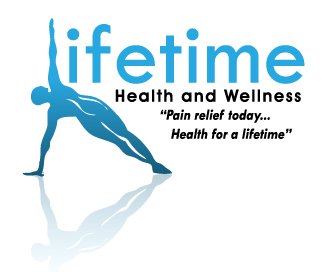Low back pain has been recognized
as a problem of epidemic proportions.
It’s estimated that approximately 80%
of the North American population will
experience debilitating back pain at
some point in their adult lives.1 It’s no
surprise that more and more people are
seeking chiropractors to find relief.
What’s even more alarming is the
apparent link between the incidence of
low back pain and obesity. According
to the American Obesity Association,
64.5% of adult Americans (about 127
million) are considered overweight or
obese.2 Recent evidence suggests that
obesity seriously impacts the musculoskeletal
system, increasing the risk of
low back pain as well as osteoarthritis,
spondylolisthesis, degenerative disc
disease and spinal stenosis.3 One study
in particular showed that people who
underwent surgery to help them lose
weight also experienced less low back
pain. 4
Causes and Effects of
Obesity and Back Pain
Some studies suggest that the link
between obesity and low back pain is
inconclusive.5 But they’re several
obvious reasons why an obese person
would experience more of this type of
pain.
First, we should look at the common
causes of obesity.
If we exclude certain
genetic or hormonal diseases, we
discover North American obesity is
primarily related to poor nutrition and
lack of exercise. Our meals are often
high in saturated fat and low in essential
fatty acids. This leaves us prone to
inflammatory states like arthritis. The
large amounts of caffeine we consume
also robs the skeleton of its bonebuilding
calcium.6 And if we take into
account our sedentary lifestyle, the
body lacks the necessary weightbearing
effects to maintain a fortified
skeletal structure. The result is an
increased incidence of osteoporosis and
bone fractures.As a person packs on more weight,
moving around becomes difficult.
Therefore, many obese people choose
to remain inactive. But this leads to big
problems. Lack of movement in the
joints can accelerate degenerative
changes, which are seen in cases of
osteoarthritis. If an obese person does
remain active, the extra body weight
puts additional stress and strain on the
muscles, tendons, ligaments and joints.
Postural changes are also common in
obese people, usually caused by
carrying extra weight in their abdomen.
As the size of the mid-section
increases, the person’s center of gravity
shifts forward and the lower back curve
is exaggerated to accommodate for
these changes. This adds more compressive
loads on the joints of the lower
back, increasing the risk of subluxation
and pain.
This South Elgin Chiropractor
Gives Tips On What You Can Do
About Weight Problems.
When faced with any health issue, the
first thing you should do is consult with
healthcare professionals. Your medical
doctor can order blood tests to rule out
hormonal imbalances or genetic
metabolic disorders. Your South Elgin
chiropractor is knowledgeable in nutrition and
exercise and is an excellent source for
help in these areas.
Secondly, take control of the two
most powerful factors controlling your
body weight: diet and exercise. Portion
control is one of the easiest ways to
reduce excess body fat. Eat slowly and
stop consuming when you’re no longer
hungry. Eating because your body
needs the fuel is different than eating
because you enjoy the food.
Think of the body as a machine with
moving parts, and give it the right fuel
to keep the engine running smoothly.
Before starting an exercise program,
also check with your chiropractor.
Weeks, months or years of
inactivity can leave your body too
weak to pick up where you left off.
Consider hiring a personal trainer. If
cost is a factor, have the trainer design
a starting program that you can do on
your own, then update the program
every six weeks or so. This gives you
the best chance for continued progress,
and keeps you more interested as your
exercise routine varies.
Above all else, keep a positive mental
attitude. Read about people who have
achieved what you’re setting out to do,
and tell yourself,
“If they did it, so can I!”
Value your health, and experience
how the aches and pains get less and
less as your body gets lighter and
References and Sources:
1. Skinner HB. Current Diagnosis &
Treatment in Orthopedics.
Lange Medical Books. New York;
2000.
2. AOA Fact Sheets. 2002.
American Obesity Association.
http://www.obesity.org/subs/fastfac
ts/aoafactsheets.shtml
3. Silveri CP & Spinasanta S.
Back pain and obesity: connection
to back pain and the development
of obesity.
4. Melissas J, Volakakis E,
Hadjipavlou A. Low back pain in
morbidly obese patients and the
effect of weight loss following
surgery.
Obes Surg. 2003;13:389–393.
5. Mirtz TA & Greene L. Is obesity a
risk factor for low back pain? An
example of using the evidence to
answer a clinical question.
Chiropractic & Osteopathy 2005; 13(2).
Online source:
http://www.chiroandosteo.com/con
tent/13/1/2/ABSTRACT%3CSCRIPT/
comments.
6. Hernandez-Avila M, Stampfer MJ,
Ravnikar VA, Willett WC, Schiff I,
Francis M, Longcope C, McKinlay
SM. Caffeine and other predictors
of bone density among pre-and
peri-menopausal women.
Epidemiology 1993 Mar; 4(2):
128-34.
